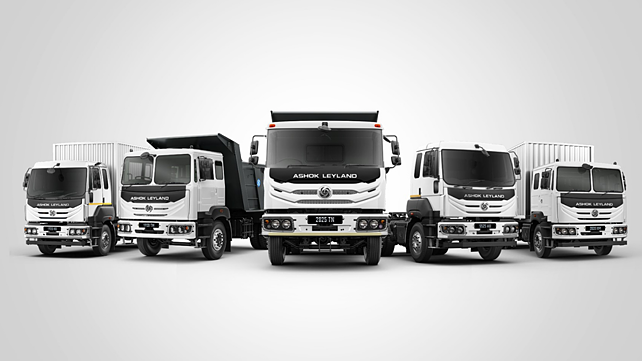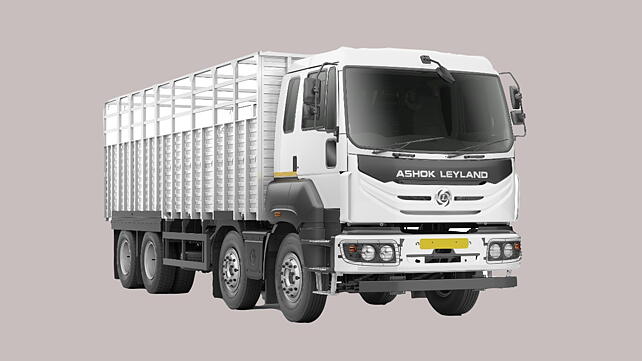
Anuj Kathuria’s career spanning over 28 years is studded with diverse experience in the automotive industry covering sales & marketing, manufacturing, sourcing and supply chain, mergers & acquisitions and programme management. Before joining Ashok Leyland, Anuj worked at Tata Motors and Tata Daewoo, Korea. During his stint at Tata Motors, he was the head of the World Truck factory.
What do you have to say about the fiscal that went by?
FY21 was exceptional and unprecedented as the auto industry was looking at transitioning from BS-IV to BS-VI, which in itself was a challenge. Coupled with the pandemic, it became even more challenging. Q1 was a washout both in terms of the ability to produce and the non-availability of buyers. The good news is that the recovery from Q3 was good.
In March 2021, the total industry volume (TIV) of trucks was good. Buses did not recover. Within trucks, the tippers and Intermediate Commercial Vehicles (ICVs) stood out. Off late, we also saw a recovery in the long-haul segment that includes multi-axle vehicles and tractor-trailers.
What about buses?
The bus segment was down by 82% as compared to the previous year. In a typical year, the TIV in bus segment will be about 41,400 units covering intermediate, medium-duty including the coaches intercity, intra-city, school and staff buses. There have been shifts within these segments.
This segment was almost consistent for the past four years. Even when the truck demand fell in FY20, the demand for buses was stable. FY21 has been a very slow year due to zero demand from schools. As public transportation was challenged, the bus operators had to go for moratoriums and restructure their current borrowings. So the bus operators were the most impacted.
The silver lining in the cloud for the bus segment was from the manufacturing sector that started working almost back to their normal production levels and needed additional staff transportation to maintain social distancing norms. Therefore, the TIV for buses in FY21 was 7,400 units, including requirements from STUs, which accounted for 1,100 units against 11,000 in the previous year.
ICV buses that cater to transporting staff, school children and rural requirements, the demand fell from 17,000 to 4,000. The medium-duty buses fell from 14,000 to 2,500.

Coming to trucks, in addition to the already low base, what are the other issues that influenced the segment?
Truck sales fell by 17% in FY21. FY20 itself was a bad year for trucks, where the volumes came down by 45%. In FY19, axle load norms were revised, and there was a delay in mobilising all the road construction projects after the elections. There were financial issues as well.
In FY20, if you take the segment level analysis, the maximum drop came in the long haul segment. It was almost similar in FY21 too.
Overall, about 20% of capacity was added due to the revised axle load norms. The freight rates did not improve. Moreover, the maintenance cost for the vehicles, when they carry more load, is higher. The fuel prices have been an all-time high. Therefore, the long haul segment has not been benefitting for transporters even if enough freight was available.
What are the opportunities for you during this crisis?
The transporters and the fleet operators are now looking at the Total Cost of Operations (TCO) benefits much more than earlier. Our fleet operators are now appreciating the features that were not being considered earlier. For example, telematics helps them understand the vehicle's location and such things, eventually reducing their back-office operations. Therefore, the vehicles with good telematics system are being appreciated and demanded by all our customers as they don't want to depend on their back office. If you see a typical transporter's back office, it would have 50 or 60 people monitoring the fleet and recording it in an Excel sheet. Our iAlert 3.0 eliminates the back office.
We recently introduced Uptime Solution Centre (USC), in which we are monitoring every single BS-VI vehicle. The idea is to ensure that the vehicles are always on the road. With USC, we can detect an error code from vehicles, which may actually result in, if not attended proactively, a breakdown. We have mastered the technique of flashing over the air. There is no need for the vehicles to reach the workshop; we can take corrective measure over the air.

What are the new features to be introduced in the near future?
We continuously work on three elements: targeting TCO improvement, improving reliability, and enhancing driver efficiency.
We are now working on a pilot project with several other features, including a 'driver advisory' system with different levels. We are working on an interactive system advising the driver on various aspects such as route, congestion, halts, facilities, risky zones, inappropriate driving, etc. Scores are given at the end of the trip to facilitate further improvements. We constantly improve the steering, accelerator, brake, clutch, seat and air-conditioning. We have HVAC to offer.
Talk to us about the AVTR range.
The best part of AVTR is reliability, as all the irritants that were in the earlier models have been eliminated. Unscheduled visits of trucks to workshops have been nullified. Already there are more than 30,000 AVTR vehicles on the road. We have achieved best in class fluid efficiency (combination of diesel and AdBlue) because of our mid NOx technology in the i-Gen6 engine. In terms of TCO, the annual savings is ranging from INR 1.5-2 lakh, when compared to the existing vehicles.
Construction Equipment (CE) manufacturing companies are expanding capacities. Do you see this helping Ashok Leyland?
In the ready-mix concrete segment, we enjoy almost 50% market with AVTR platform. Ready-mix is just one sub-segment of CE. We are also working with others in the CE segment. Overall, the mining and CE segment is doing very well. This segment had the fastest recovery, and we saw robust demand in Q4. I think, the demand will continue in the coming years because of the national infrastructure projects worth INR 102 lakh crore. This will be very stable over the four to five year period.
The outlook for the CE and mining segment will be very robust, and this will also drive several other core industries, including steel and cement. Moreover, this will fuel transportation requirements of these commodities, leading to the demand for the long haul vehicles.

Tell us about your digital initiatives?
We are the first ones to have the 'Sales Configurator'. Today, our customers can configure their own vehicles alone or with our dealer sales manager, with the modular platform. They can also go and configure it on our website.
All the testimonials required to engage with the customers happens on the digital platform. We did not print any brochure or technical specification sheet, or a catalogue for BS-VI vehicles. We made everything digital. Even if a customer wants to get spare parts, he can go to LeyKart and order the same. He can see all the catalogues all the time, and there is no way that he will end up ordering the wrong part.
We have a feature called e-diagnostics for guided troubleshooting. If it does not solve the issue, the system will help connect to an expert to get remote help. The truck operator can enable the camera in his smartphone and show the portion of the problem and get it rectified. The truck needs to be taken to workshops only for major breakdowns, where certain parts need to be opened up and replaced.
What new models can we expect in FY22?
We are working on the modular platform continuously. Recently, we launched India's first 41 tonne four-axle truck with the patented double-tyre lift-axle.
We are also going to launch a three-axle truck with 31 tonne GVW. While competition has an offering in this segment, ours will be different. We will have the parallelogram lift arrangement, which is the best in class in the performance of the lift. The 3120 model truck will be introduced in May or June.
We will continue to work very closely with all our customers and based on their needs we will introduce variants. Since it's a modular platform, we have over 6,000 combinations already configured. So we can continuously personalise them as per the needs of the customers.
We will also be introducing trucks with 300 plus hp, as well as CNG products. We have automated manual transmission in certain products, and we plan to introduce it in a few other products as well. This will improve driver comforts and fluid efficiency.